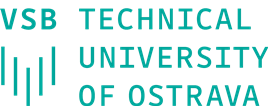The first transparent luminescent solar concentrator based on lead-free perovskite nanocrystals was developed by scientists from the Czech Institute of Research and Advanced Technologies (CATRIN) and the VSB – Technical university of Ostrava in collaboration with colleagues from the Friedrich Alexander University in Erlangen, Germany and the University of Technology in Brno. The unique solution overcomes the disadvantages of existing perovskite devices for obtaining solar energy, which are mainly the presence of lead and low stability.
Luminescent solar concentrators (LSCs) are devices capable of absorbing solar radiation and concentrating it at its edges, where it is subsequently converted into electrical energy using a built-in solar cell. “The main idea of the whole concept of LSCs is energy self-sufficient buildings, when their generally large glazed areas are efficiently used to produce electricity. Thanks to the highly luminescent and colloidally stable lead-free perovskite nanocrystals that we developed in the Photoelectrochemistry group at CATRIN, we were able to construct a sufficiently transparent solar concentrator whose parameters resemble a classic window,” explained the corresponding author of the study, Štěpán Kment, who, in addition to CATRIN, also works at VŠB – TUO. The article was published in the American Chemical Society’s journal ACS Applied Energy Materials.
Another great advantage of the new LSC is the absence of lead, which is still dominantly used in this type of perovskite nanocrystals, but at the same time brings considerable environmental and health complications. The researchers managed to achieve very promising efficiencies and good photostability with this new type of LSC. The scientific work was created mainly thanks to excellent domestic and foreign cooperation.
“Luminescent solar concentrators are an important step on the way, the goal of which is the creation of a sustainable and renewable network of photovoltaic power plants built into the glass surfaces of urban buildings. This could contribute to increasing the use of solar energy without unnecessary interventions in the landscape,” said another author, Michal Otyepka from CATRIN and IT4Innovations at VŠB-TUO.


